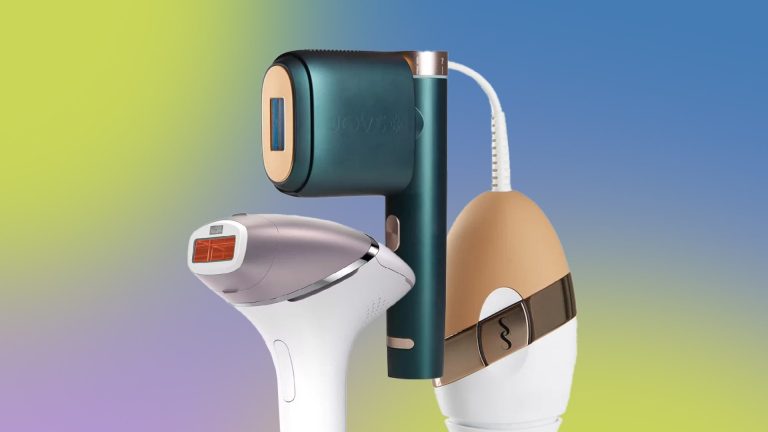Repeated use of this technique means that, over time, regrowth is reduced. Even when does grows back in the first few days of treatment, it will grow back at a significantly slower rate. You can use IPL technology to remove hair on your legs, bikini line and smaller areas like your armpits.
Are home laser hair removal machines safe?
Yes, home laser hair removal devices tend to be safe and most are FDA approved. Take Philips Lumea for example. “It has been designed and developed with dermatologists and leading skin scientists. It has a number of built-in safety mechanisms and when used correctly should have no impact on skin health.”
The biggest risk with cheaper devices is scarring – although the best way to avoid this is to start with lower intensity levels, avoid zapping on sensitive areas, avoid using the treatment on facial hair or above your neck and do a patch test on a small area before committing to large areas of your body, such as your legs. It is recommended that beginners wait three to four weeks after the patch to make sure you have no side effects.
When you start using an IPL hair removal device, you should add a broad-spectrum sunscreen to your full-body skincare routine, as your skin will be more sensitive to UV rays. Also, avoid anything that may irritate your skin such as serums, deodorants, hot showers, scented body lotions, and perfumes for at least 24 hours after the zap.
Does laser hair removal hurt?
IPL is widely regarded as one of the most painless methods of hair removal, but this ultimately depends on you and the device you use. Today, many laser hair removal tools have built-in cooling technologies, which make these quick bursts of light as painless as possible. Of course, you should also always look at starting with the lowest possible settings to see how you react.
Do laser hair removal machines work for everyone?
Unfortunately, IPL devices do not work on all skin and hair types. “Hair colors and skin tone affect how suitable an IPL treatment will be on an individual level, which means it won’t be for everyone,” Chloé told us. “IPL is most effective when there is a greater contrast between hair color and skin tone.” People with lighter skin and dark hair have more contrast meaning more light will be absorbed by the hair than by the skin.
As with all other IPL-based treatments, this light energy is absorbed by the melanin in the hair follicle. When there is not enough melanin in the hair, for example in light, white or gray hair, then IPL will not work. Similarly, red hair has a different type of melanin, which cannot absorb light, so again it is not suitable for IPL treatment. IPL treatments are also not recommended for people with darker than dark skin tones.”
IPL, laser and diode lasers can cause skin discoloration to dark skin if the wrong type of machine is used. In fact, when there is little to no contrast between hair and skin, your skin will absorb the light which turns into heat and causes pain, blisters and burns. Ouch.
How should you prepare for laser hair removal at home?
First, “the area must be clean-shaven within 24 hours prior to treatment,” Barbara told us. “Electric razors are not recommended as the hair is usually left too long. And do not pinch, pluck or pluck the treated area between or before sessions. Only shave the area.”
“Fake tanning products cannot be used for three to four weeks before treatment. the area should be thoroughly exfoliated to remove all debris,” added Barbara.
Nothing else; Avoid skin care products that may be irritating, such as retinal ingredients or brighteners, and acidic cleansers prior to laser hair removal treatment.
After more hair removal content? Head this way for facial shavers for women, shaving cream for women and facial wax strips. For more from Glamor UK Commerce Editor Sophie Cockett, follow her on Instagram @sophiecockettx. And for more shoppable beauty content from Glamor UK Commerce Writer Denise Primbet, follow her on Twitter @deniseprimbet and Instagram @deniseprimbet.

